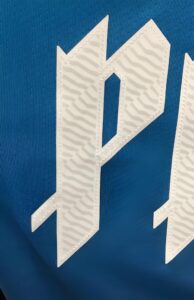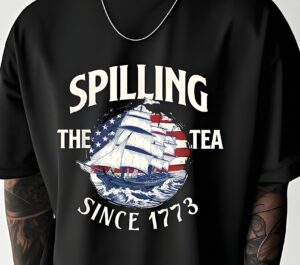1. Kas yra balti plastizoliniai dažai ir kodėl jie būtini šilkografijai?
2. Kas daro baltą rašalą tikrai „aukščiausios kokybės“?
3. Kaip išsirinkti geriausią baltą plastizolinį rašalą savo spausdinimo projektams
Tinkamo balto plastizolinio rašalo pasirinkimas priklauso nuo 3 svarbiausi dalykai: audinio rūšis, spausdinimas požiūris ir našumas norai. Spausdinate ant 100% medvilninių marškinių? Jums reikės pageidaujama priežastis arba medvilnės baltas rašalas. Poliesterio ir mišinių rašalams ieškokite mažas kraujavimas arba didelio neskaidrumo polibaltos formulės.
Nepraleiskite progos į nepamiršk rašalo maišymas ir suderinamumas kartu su jūsų parduotuvės maišymu įtaisas. Galonas ilgis, klampumas ir galiojimo laikas papildomai atlikti vaidmenis užimtose operacijose. Jei reguliariai tvarkote skubius užsakymus arba per didelis tūris darbo vietų, išsirinkti plastizolinis rašalas su trumpu blyksniu atvejų ir kavos procedūra temperatūros iki parduotuvė laikas (ir stiprumas) be aukojimas pirmos klasės. Puikiai lankstūs balto šilkografijos dažai kartu su jūsų operacija – visada kreminė, be jokių pastangų suformuluotas ir pastovus nuo vieno galono iki likęs lašas.
4. Neskaidrumo supratimas ir kodėl jis svarbus
Neskaidrumas rodo, kaip gerai rašalas paslepia pluoštus arba spalva drabužio apačioje. Didelis neskaidrumas baltas plastizolinis rašalas yra gyvybiškai svarbus už grėsmingas, ryškūs atspaudai, ypač veikiant su tamsus audiniai. A didesnis neskaidrus rašalas metodas tu galėtų užtepkite vieną, lengvą baltos spalvos sluoksnį ir pasiekite ledyninė balta rezultatas be perspausdinimo.
Mažas neskaidrumas rašalai reguliariai karas padengti spalvotus pluoštus arba dažus, dėl to sekančio į sumažėjęs atspaudai arba bijojo „palaidinės šešėlio“. The puikus balti plastizoliniai dažai pasižymi pažangiomis pigmentų sistemomis, užtikrinančiomis maksimalų draudimas ir puikiai švarų paviršiaus apdailą. Jei jūsų išsaugoti vertės a aukščiausios klasės, blizganti estetika, didelis neskaidrumas turėtų būti jūsų pagrindinis rašalas pirmenybė.
5. Kaip kietėjimo temperatūra veikia jūsų atspaudus?
Kietėjimas yra technika plastizolinio rašalo pavertimas iš skysčio dešinėje į a ilgalaikis, lankstus stabilus. Balto plastizolinio rašalo atveju terapija temperatūra yra paprastai apvalus 160 °C (320 °F), bet žema priemonė variantai yra vis labiau pripažįstamas jautriems audinys ir finansinė galia santaupų.
Tinkamas teisių gynimo garantijos atsparumas skalbimui ir įtrūkimams ar lupimasis. Tačiau perkaitimas gali apdeginti drabužį arba motyvas dažai migracija – ypač su poliesteriu arba kombinuotas audinys. Žemas gydymas balti dažai padėti tu į greitasis kietėjimas greitai, sumažinti spaudimą apsistoti laikas ir sumažėti čirškiantis arba susitraukimas ant aukščiausios kokybės medvilnės arba trijų kombinacijų marškiniai. Jei spausdinate per porą audinių rūšių, turintis lankstumą, žemas kietėjimas rašalas jūsų arsenale leidžia užtikrinti nuoseklus rezultatai kiekvienas proga.
6. Silpnas dažų išsiskyrimas ir dažų migracija: kodėl tai vyksta ir kaip to išvengti?

Kraujavimas ir dažų migracija yra aršiausi priešai baltos spalvos ekranas šilkografija. Užleidimas vyksta kai drabužių dažai prasiskverbia į rašalą, virsta ryškus balti atspaudai virsta purvinai violetine arba pilka sugadinimai. Poliesteriai ir mišiniai yra ypač atsakingas į tai, matydamas, kad jie įtraukti reaktyviųjų dažų molekulių, kurios pasirodyti esąs mobilusis po šiluma.
Į kova dažų migracija, aukščiausios klasės baltas plastizolinis rašalas gali pasigirti mažas kraujavimas arba Atsparumo kraujavimui metodas. Kai kurie dažai yra sukonstruoti daugiausia polietileno arba polimedvilnės mišiniams (suskirstyta į kategorijas kaip polibalta arba mažas kraujavimas) ir sudaryti iš cheminiai blokatoriai, kurie sulaiko dažus. Spausdinant ant tvirtų audinių, nuolat žvilgtelėti į kraujavimui naudokite smulkus, silpnas kraujavimas rašalą ir tvarkykite savo terapija temperatūra iki sustoti dažų migracija anksčiau nei tai sugadina jūsų darbą. Pasitikėkite mumis – įskaitant ir šį žingsnį už Jūsų spausdinimo projektai taupo jūsų laiką, grynieji pinigai, ir pripažinimas pabaigoje.
7. Medvilnė, poliesteris ir mišiniai: tinkamo balto rašalo pasirinkimas jūsų audiniui
8. Maišymo sistemos ir didelis neskaidrumas – ką turėtų žinoti kiekvienas šilkografijos spausdintuvas
9. Patarimai, kaip spausdinti, mirksėti ir pasiekti lygų paviršių
10. Baltojo plastizolinio rašalo prekės ženklo lyderiai: „International Coatings“ ir kiti
Nors visi rašalo prekių ženklai turi ką pasiūlyti, keli iš jų išsiskiria iš kitų. Šilkografijos specialistai dažniausiai mini „Wilflex“ dėl neprilygstamo nepermatomumo. Dunkin' kremas kaip nuoseklumas ir pranašumas mažas kraujavimas galimybės. Jų baltas plastizolis yra labai vertinamas, kai reikalingi labai ryškūs pagrindai lavina akivaizdi taip pat spaudiniai kaip, aukščiausios kokybės spaudiniuose, kuriems reikalingas lankstumas ir tvirtumas.
„International Coatings“ siūlo platų baltų dažų asortimentą – nuo bendrosios paskirties nuo baltos iki rafinuotos polibaltos, skirtos viršutinis užlaidas atsparumas ir lengvas rašalas maišyti taip, kaip noriu. Šie prekių ženklai yra patikimi kryžminė medvilnė, poliesteris ir mišiniai, kur neperšaunamas kietėjimas ir ledyninė balta apdaila reikalinga. Tačiau nepriklausomai nuo naudojamų šilkografijos dažų prekės ženklo, įsitikinkite, kad jie yra aukštos kokybės bendradarbiavimas pastovus greitis nuo greito blyksnio ir jokių problemų su pasirodymas. Jūsų spauda ir jūsų klientai pastebės skirtumą.
Svarbios pastabos: naudojant baltą spalvą plastizolinis rašalas už šilkografija
- Balti plastizoliniai dažai reikalingi, kai norima atvaizduoti ryškius ir ryškius atspaudus ant medvilnės tekstilės gaminių, poliesteris arba mišiniai – pasirinkite tinkamą formulę pagal savo poreikius.
- Aukščiausios kokybės baltas rašalas reiškia didelį neskaidrumą, very kreminis, Padengia tankius potėpius, lengvai nulupama ir sukietėjusi išlaiko minkštumą.
- Išankstinis apdorojimas rašalą ant audinio, kur jis bus tepamas – balto poliesterio ir mažas kraujavimas rašalai yra labai svarbūs strateginiai ant plastikų.
- Teisinga kietėjimo temperatūra yra pati tinkamiausia svarbus nes per aukšta temperatūra gali apdeginti drabužį, sukelti dažų judėjimą arba jų atsisluoksniavimą; žema temperatūra kietėjantys dažai turi mažiau apribojimai.
- Jei norite geriausių atspaudų, pakartotinai bandykite, ar rezultatas bus balčiausias, ir įsitikinkite, kad turite gerą rašalo maišymo sistemą.
- „Wilflex“ ir „International Coatings“ yra pirmaujantys ir labiausiai gerbiami prekių ženklai, kuriais galima pasitikėti, kai reikia balčiausių spaudinių ir nuoseklumo. atspaudai yra labai svarbu profesionalams.
- Turite kontroliuoti kiekvieną spausdinimo dalį procesas pradedant nuo tinklelio ir pereinant prie blykstės ir valytuvas norint pasiektie būtipaviršiaus ir apdailos kokybė.
- Sujungtų audinių ar net mišrių drabužių mokymo programoje turėjo būti įtraukta „pasipriešinimo kraujavimas; strateginis panaudojimas atletika niekada neturėtų būti ignoruojamas.
- Įsigyti galonas daugiau nei vienam vienetui – dirbtuvėms, kuriose yra didelis srautas, tai bus naudinga, tačiau nepamirškite, koks svarbus yra partijos nuoseklumas.
- Su geriausiais balčiausias rašalas, naudojamas išm printers ekranas virš audinys atgyja, g.strategiškos investicijos yra reikalingas, daro spalvų šuolisf shožys.


